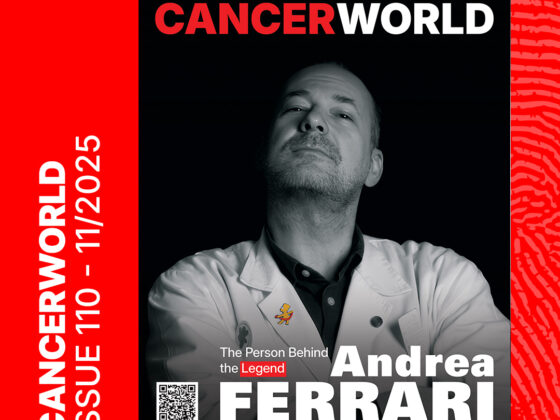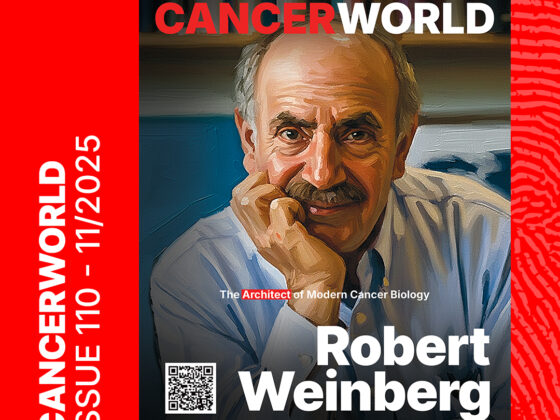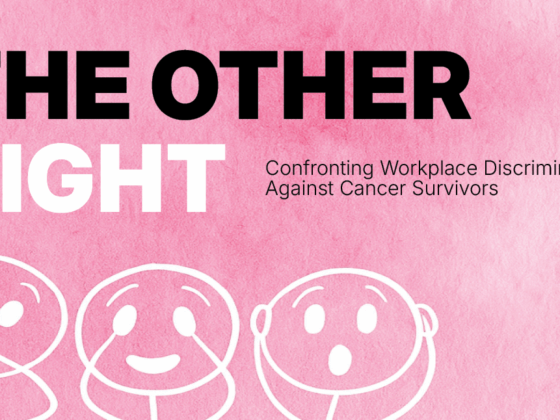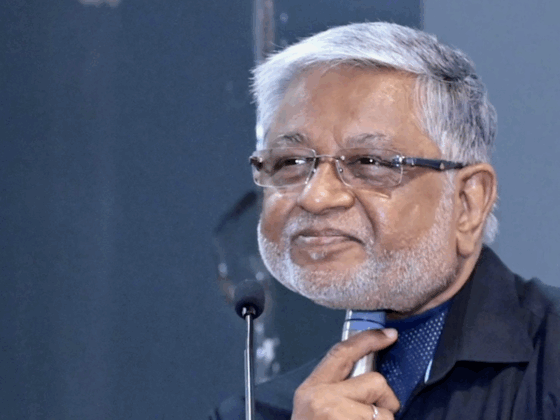“We had to explain that the reason she had broken her hip was because she was getting weaker and essentially dying… At that stage knowing whether Mum had days or months left would have been an important factor.”
Helen Waddell, talking about her mother Liz Skinsley
“I wish we’d had the opportunity to plan our lives about the fact we were dealing with the last few years of our son’s life. As a family we’d have gone on more holidays. We’ve lots of good memories, but also bad ones, and the bad ones are of missed opportunities. It leaves you with regrets about the things you thought you had plenty of time to say and do, but never managed.”
Tony Bonser, talking about his son Neil
While the two quotes above talk about very different experiences, the point they make is the same: having a clear idea about how long a loved one will live is essential to making the most out of their remaining days, weeks or years.
Yet data from the UK’s National Audit of Care at the End of Life (NACEL) reveal that around half of patients are recognised to be dying less than one and a half days before they actually die.
Knowing a person is nearing death provides the ultimate in personalised medicine. “If we can recognise the dying process we have a real chance to make that experience as good as it can possibly be, and give patients the highest quality of care at the end of life,” says Seamus Coyle, a palliative care consultant from the Clatterbridge Cancer Centre, Liverpool.
The predicament facing clinical staff ‒ not least oncologists ‒ is that prognostication, predicting when a patient is likely to die, is an inexact science with little in the way of an evidence base. “Prognostication in advanced cancer is currently an unmet need,” says Barry Laird, a Reader in Palliative Medicine at the University of Edinburgh. “It represents a crude art form largely based on clinician’s intuition/experiences, which are often optimistic, informal and subjective.”
Benefits of prognostication
Prognostication brings multiple benefits throughout the cancer journey, not least providing clarity to both clinical and patient decision making. It offers the opportunity to focus on the quality of the patient’s remaining days, and put a stop to the pursuit of inappropriate aggressive therapies. In the absence of good prognostic information, the healthcare machine continues its relentless pursuit of cure at all costs, with the full gamut of tests, investigations and treatments. A systemic review of 38 international studies, evaluating 1.2 million patients in total, demonstrated non-beneficial administration of drugs (including antibiotics, cardiovascular, digestive and endocrine treatments) occurred on average in 33‒38% of dying patients (Cardona-Morrell M et al. Int J Qual Health Care 2016). “These behaviors have repercussions… on the capacity and financial sustainability of health services, and perpetuate the unrealistic high social expectation of survival at all costs, but also more importantly reflect a disregard for human dignity and quality end of life,” wrote the study author Magnolia Cardona, from Bond University Australia, and colleagues.
It offers the opportunity to focus on the quality of the patient’s remaining days, and put a stop to the pursuit of inappropriate aggressive therapies
Recognition that a person is entering their last year of life enables advance care planning to be implemented, allowing discussions about the personal goals and wishes of the dying person. “Missing these conversations represents a major lost opportunity. Without them there’s no way to ensure end of life care aligns with what matters most to the patient,” says Stephanie Harman, a palliative care doctor at Stanford Health Care, California.
Providing good quality palliative care is an important component of advance care planning, which perversely enables patients to live longer. A study of patients newly diagnosed with metastatic non-small-cell lung cancer, by Jennifer Temel from Harvard Medical School, found cancer patients randomised to receive early palliative care integrated with standard oncology care lived on average for two months longer than those receiving standard oncology care, and furthermore they enjoyed better quality of life and fewer depressive episodes (Temel JS et al. N Engl J Med 2010).
Prognostic information helps clinicians to consider palliative care treatment decisions, such as whether to offer radiotherapy. “We need prognostic information to weigh up whether patients will live long enough to benefit against the disturbance of having treatments in their last few weeks of life,” says Laird.
Knowing death is imminent allows for timely referral to hospices, which are usually unable to offer care beyond a few weeks. When death is thought to be just a few days away, the dying can be prescribed drugs to manage symptoms such as noisy respiratory secretions and terminal restlessness, which can distress patients and their families.
Knowing that time is short can be especially valuable for families, allowing them to organise their lives to be with dying relatives. “As a family it came as a real shock when a doctor told us my father was unlikely to survive the week. Had I known that he was terminal I would have structured my life differently and moved back to be with him,” says Muhammad Ahmad, who is now working at a US assistive intelligence company on an algorithm to predict when people are likely to die.
Why are patients given so little information?
Undoubtedly, one of the issues behind lack of prognostic awareness is that many cancer patients have no comprehension of their prospects. A study of patients with newly diagnosed metastatic stage IV lung and colorectal cancers found that 69% and 81% respectively believed the palliative chemotherapy they received was intended to cure them (Weeks JC et al. N Engl J Med 2012). This finding is supported by a study of patients with advanced cancer who oncologists expected to die within six months, which showed that only 5% of the patients had a completely accurate understanding of their illness and 38% reported that they had never discussed life expectancy with medical staff (Epstein A et al. JCO 2016).
One explanation for lack of understanding may be the absence of explicit prognostic communications between patients and healthcare staff. A study of audio recorded ‘bad news encounters’ between oncologists and patients, by Toby Campbell from the University of Colorado, found ‘scan-talk’ ‒ offering news of a prognostic nature ‒ occupied less than 10% of the entire conversations, while ‘treatment-talk’ occupied 50% (Singh S et al. J Oncol Pract 2017) . The authors comment on a ‘natural collusion’ between patients and doctors, writing “We observed immediate transition to treatment-talk during the disclosures of bad news, which potentially contributes to patients’ misinterpretation of their prognosis and stifles any further discussions surrounding prognosis.”
‘Scan-talk’ ‒ offering news of a prognostic nature ‒ occupied less than 10% of the entire conversations, while ‘treatment-talk’ occupied 50%
Doctors may shy away from candid discussions due to sensitivities around being the bearer of bad news. A study of people watching videos of patient encounters showed that doctors delivering optimistic messages were perceived as more compassionate and trustworthy than those delivering less optimistic messages (Tanco K et al JAMA Oncol 2015). There is also the question of how accurate doctors are at prognostication. A study co-authored by Nicholas Christakis, from the University of Yale, reviewed survival estimates made by 343 doctors for 468 terminally ill patients.
The study found that, on average, doctors predicted that patients would live 5.3 times longer than they actually did (Christakis N and Lamont E BMJ 2000). In his 2001 book, ‘Death Foretold’, Christakis describes ‘the ritualization of optimism’, arguing that the challenge of prognosis causes most doctors to shirk difficult conversations around end-of-life planning and instead hope for the best. “Clinicians go into this business because they’re optimistic about the care they can deliver, which makes them somewhat biased,” says palliative care specialist Stephanie Harman.
Current prognostic tools are very inaccurate
Perhaps the overriding reason for lack of information, hindering the efforts of even the most assiduous oncologists and palliative care doctors, is that the current prognostic tools for predicting death are hugely inaccurate.
Around the time of cancer diagnosis, prognostication primarily relies on staging the extent of the disease and grading the appearance of cancerous cells. But as Paddy Stone, Professor of Palliative and End of Life Care at University College London, points out, “While this information helps make treatment decisions, simply knowing the patient has stage IV disease won’t necessarily distinguish those people with life expectancies of days from those who might still survive years.”
Later in the cancer journey, measures such as the Karnofsky Performance scale (providing a score of 0 to 100) and Eastern Cooperative Oncology Group (ECOG) Performance status (providing a score of 0 to 5), are used to help prognosticate. These summarise the ability of patients to perform daily activities and, although not initially devised as prognostic tools, have been shown to correlate with survival. “Such scales are subjective,” says Laird. “Unless you watch the patient every day, they’re little better than guesstimates. Patients often dress up to visit the doctor and give the impression they’re functioning much better than they really are.”
“Such scales are subjective… Unless you watch the patient every day, they’re little better than guesstimates”
An alternative approach for identifying people who might benefit from palliative care is the ‘surprise question’, with clinicians asking themselves “Would I be surprised if this patient were to die in the next six to 12 months?” The binary ‘yes’ or ‘no’ answer provides little indication of the actual length of time left. “Putting a timeframe on life expectancy is a bit like predicting the weather,” says Stone. “Short term weather forecasts over the next three to 14 days can be really accurate, but it’s not so good for considering events over the next three months to a year.” Despite all this, it is the intuition of clinical staff that is still considered gold standard approach. “There have been papers suggesting doctors do better, and papers suggesting nurses do better. What seems true is the combined efforts of multidisciplinary teams are best,” says Stone.
Could prognostic biomarkers help?
Realising the inherent limitations of prognostic tools, a number of investigators are looking to devise new methods. Barry Laird believes documenting inflammatory status offers the potential to deliver greater accuracy. For this he uses the modified Glasgow Prognostic Score (mGPS), where C-reactive protein (CRP) provides a positive marker of systemic inflammation and albumin a negative marker. For the scale, Laird explains, if CRP and albumin levels are normal, the patient has a score of 0; if CRP is elevated but albumin normal, the score is 1; and if CRP is elevated and albumin low, the score is 2. In a study, Laird showed that three-month survival for patients with advanced cancer varied from 82% for those with mGPS 0 to 39% for those with mGPS 2 (Laird BJ Clin Cancer Res 2013). Laird believes even better prognostic results can be obtained by combining mGPS with ECOG scores. In a recent study he showed that if patients have an mGPS of 0 and an ECOG score that is functionally good, 88% will be alive at three months, whereas if their mGPS is 2 and ECOG 4, only 10% would be alive at three months.
The GPS also reflects the degree of tumour-related cachexia; at the recent Sharing Prognosis in Cancer Care (SPCC) Task Force on cachexia, Jann Arends from the University of Freiburg suggested that the GPS might be used as a screen for pre-cachexia in cancer patients. Since cachexia accounts for 20‒30% of cancer deaths, developing the condition undoubtedly represents a poor prognostic sign.
Paddy Stone developed the Prognosis in Palliative care Score (PiPS) to allow a greater number of prognostic factors to be taken into consideration. From a systematic literature review he identified 50 candidate variables reported to predict survival in advanced cancer. More than 1,000 terminal cancer patients then had these variables measured shortly after referral to palliative care services, with a multivariate data analysis undertaken to see which related to survival when patients were followed up until most died. The analysis identified 11 core variables (pulse rate, general health status, mental test scores, performance status, anorexia, metastatic disease, liver metastases, C-reactive protein, white blood count, platelet count and urea) predicting both two-week and two-month survivals. From this, Stone went on to develop two different prognostic models, one without blood results (PiPS-A) and one with blood results (PiPS-B). In the original study, he and co-authors showed both models were at least as good as multi-professional clinical estimates of survival, and that PiPS-B was significantly better than either a doctor’s or a nurse’s prediction, but no better than a multi-professional estimate (Gwilliam B et al BMJ 2011). The results of a confirmatory study involving another sample of more than 1,000 advanced cancer patients are expected soon.
To identify patients on general medical wards who would benefit from advance care planning, Stephanie Harman has taken the concept of mathematical modelling one step further, using machine learning. Perhaps best known for powering Google suggestions in internet searches, machine learning is the process by which computers train themselves to identify subtle patterns in data. Harman and colleagues, from Stanford Health Care, collected de-identified data from more than 10,000 general medical patients at the same institution, which was used as a ‘training set’ to identify common features among patients who subsequently died over the next 12 months. In a pilot study (currently on hold due to COVID-19) the team plan to use computers to systematically compare new patient data with the ‘training set’, to flag up high-risk patients. “It’s a way to prompt clinicians when they’ve got really busy work flows to stop and find the time for advance care planning conversations,” says Harman.
One limitation of the Stanford approach is that the ‘black box’ nature of the system makes it difficult to tell how the model derived its conclusions. KenSci, an assistive intelligence company that came out of the University of Washington, is developing interpretable models, where the platform specifies the reason why the end of life prediction was made. “Since models are wrong 10% of the time, having an explanation gives clinicians far greater confidence in findings,” says Muhammad Ahmad, principal data science researcher at KenSci.
Seamus Coyle is looking for chemical signatures in the urine of terminally ill patients that may signify they are in the last few days of life. He takes inspiration from the story of Oscar, a therapy cat in a Rhode Island nursing home, who predicted the impending death of more than 100 terminally ill patients by curling up to sleep next to them (Dosa D N Engl J Med 2007).
One theory is that Oscar used his acute sense of smell to detect volatile organic compounds resulting from patient’s organs shutting down. Coyle’s research is using mass spectrometry to measure around 100 different chemicals, to define a characteristic ‘fingerprint’ signifying death is imminent. In a preliminary study, Coyle compared the chemical signatures of 30 lung cancer patients in the last week of life, and 30 in the second-to-last week of life, with 100 lung cancer patients whose conditions were not terminal, leading to definition of a tentative signature Coyle plans to verify in future studies. “Ultimately, we hope to be able to feed the chemical information into a computer programme to come up with a binary score (yes or no) of whether the patient is in the last few weeks of their life,” explains Coyle.
“We hope to be able to feed the chemical information into a computer to come up with a binary score of whether the patient is in the last few weeks of their life”
Lia van Zuylen, Professor of Palliative Cancer at Amsterdam UMC, is interested in identifying the last few days of life, using proteomics to look at protein changes in the urine and an under-the-tongue probe to identify impairments to the microcirculation (the capillaries responsible for the exchange of oxygen and nutrients between the vasculature and adjacent cells). “Establishing the physiological process of dying would make doctors more aware of the existence of a dying phase, and help them to communicate better with their patients,” says van Zuylen.
Talking honestly to a patient about their death is arguably one of the most difficult tasks undertaken by health care professionals. Few doubt that developing better prognostication will enhance dialogues, but for these conversations to be truly effective, greater emphasis will also need to be placed on interpersonal communication skills. It is not enough for health professionals to tell patients they are nearing the end of life, they need to be sure that their patient fully comprehends what has been said to them. As van Zuylen emphasises, healthcare staff have one chance to get it right. “Dying is a unique and irreversible experience that cannot be redone. It’s important not only for patients, but also for family members. The way a loved one dies leaves deep marks in memories that have repercussions for the rest of your life.”












